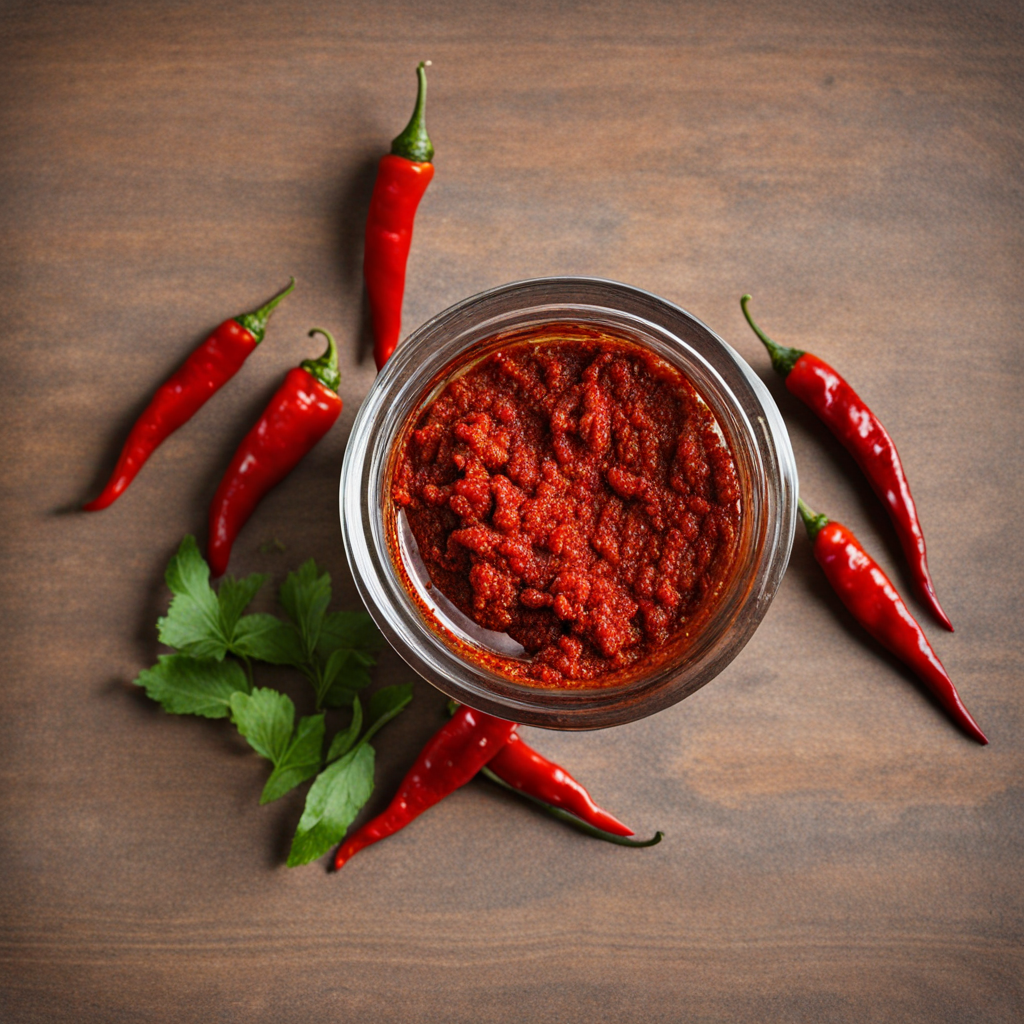Shakshuka
Shakshuka is a vibrant and hearty dish that hails from the rich culinary traditions of Libya, although it has become popular throughout North Africa and the Middle East. At its core, Shakshuka consists of poached eggs nestled in a savory and aromatic sauce made from tomatoes, bell peppers, and onions, seasoned with a medley of spices such as cumin, paprika, and chili powder. The sauce is often enriched with fresh herbs like parsley or cilantro, adding layers of flavor and a pop of color that make this dish visually appealing. In Libya, Shakshuka is typically enjoyed as a breakfast or brunch dish, but its robust flavors make it suitable for any meal of the day. The eggs are gently cooked in the sauce until the whites are set while the yolks remain runny, creating a delightful contrast when broken open. This dish is often served with warm crusty bread, perfect for scooping up the rich sauce and yolks, making every bite a comforting and satisfying experience. As you dive into Shakshuka, you'll discover a harmonious balance of flavors that is both comforting and invigorating. The sweetness of the tomatoes, the smokiness of the spices, and the creaminess of the eggs come together to create a dish that is not only delicious but also nourishing. Whether you enjoy it at a local eatery or prepare it at home, Shakshuka promises to be a delightful exploration of North African cuisine that will leave your taste buds yearning for more.
How It Became This Dish
Origin of Shakshuka Shakshuka is a dish that has transcended borders and gained immense popularity in various regions, but its roots can be traced back to North Africa, specifically Libya. The word "shakshuka" itself is derived from the Arabic verb "to mix," which aptly describes the way the dish is prepared. Traditionally, it consists of poached eggs nestled in a rich, spicy tomato sauce, often flavored with peppers, onions, and spices such as cumin and paprika. The dish is particularly associated with the Maghreb region, which includes countries like Tunisia, Algeria, and Morocco, but Libya holds a special place in its history. The exact origins of shakshuka are somewhat nebulous, with various theories surrounding its inception. Some culinary historians suggest that the dish was influenced by the Ottoman Empire, which ruled over parts of North Africa for centuries. The Ottomans introduced a variety of cooking techniques and ingredients, leading to the blending of culinary traditions. This melding of cultures ultimately paved the way for shakshuka's development, as local ingredients were combined with Ottoman influences, creating the vibrant, flavorful dish we know today. \n\n Cultural Significance in Libya In Libya, shakshuka is more than just a meal; it is a cultural symbol that represents the country's culinary heritage. The dish is often prepared for breakfast or brunch but can be enjoyed at any time of the day. It is not uncommon for families to gather around the table to share a steaming hot pan of shakshuka, along with fresh bread for dipping. This communal aspect of dining reflects the importance of family and togetherness in Libyan culture. Shakshuka has also become a fixture in Libyan hospitality. When guests visit, it is common for hosts to serve this dish as a way to welcome them and showcase the rich flavors of Libyan cuisine. The use of local ingredients, such as fresh tomatoes and peppers, highlights the region's agricultural bounty and the value placed on seasonal produce. Moreover, shakshuka's adaptability allows for various interpretations, as cooks may add different spices or vegetables based on personal preferences or regional availability. \n\n Historical Development Over time, shakshuka evolved from its North African origins to become a beloved dish in many Middle Eastern countries, particularly in Israel and Palestine. The migration of North African Jews to Israel in the mid-20th century played a significant role in spreading the dish's popularity. Upon their arrival, they brought with them their culinary traditions, including shakshuka, which quickly integrated into the local cuisine. In Israel, shakshuka underwent further transformations, with variations appearing that incorporated different spices and cooking techniques. The dish became a staple in cafes and restaurants, often served with a side of pita bread and various toppings, such as feta cheese or olives. This evolution showcases the dish's versatility and the influence of different culinary traditions on its preparation. \n\n Global Popularity In recent years, shakshuka has gained international acclaim, appearing on menus in trendy brunch spots and eateries around the world. Its vibrant colors and comforting flavors have made it a favorite among food enthusiasts. Chefs and home cooks have embraced the dish, experimenting with unique variations that pay homage to its origins while also introducing new ingredients and techniques. The rise of social media has also contributed to shakshuka's popularity. Food bloggers and influencers have showcased the dish through visually appealing posts and recipes, further enticing a global audience to try their hand at making it. This exposure has led to a surge of interest in North African and Middle Eastern cuisines, allowing shakshuka to stand as a symbol of culinary fusion and exploration. \n\n Regional Variations While the Libyan version of shakshuka is characterized by its use of local spices and ingredients, other regions have developed their own interpretations. For instance, the Tunisian variant often includes the addition of harissa, a spicy chili paste that enhances the dish's heat and flavor. In Israel, the dish may be garnished with fresh herbs like cilantro or parsley, and it is sometimes served alongside a dollop of tahini or a sprinkle of crumbled feta cheese. These regional variations highlight the adaptability of shakshuka, allowing it to cater to different palates and preferences. Each version tells a story of its place of origin, reflecting the local culture, climate, and available ingredients. As shakshuka continues to evolve, it remains a testament to the rich culinary traditions that span across North Africa and the Middle East. \n\n Conclusion Shakshuka has journeyed from its humble beginnings in Libya to become a beloved dish enjoyed worldwide. Its rich history, cultural significance, and adaptability make it a fascinating subject for food historians and enthusiasts alike. As people continue to explore and reinterpret this classic dish, shakshuka serves as a delicious reminder of the interconnectedness of culinary traditions and the power of food to bring people together. The dish not only nourishes the body but also fosters a sense of community and connection, making it a cherished part of Libyan heritage and beyond.
You may like
Discover local flavors from Libya







